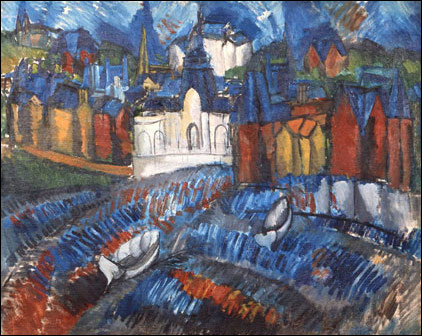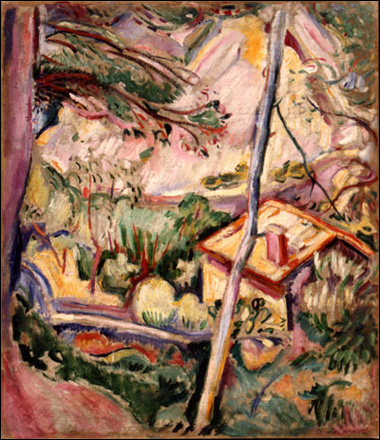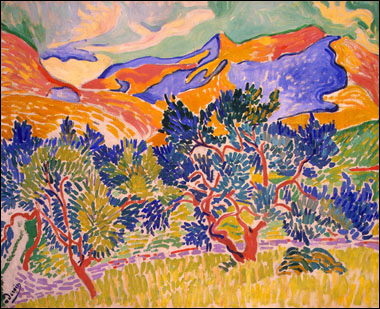Fauvism was a brief art movement made up of several young Parisian painters at the beginning of the 20th century.
Primarily a transitional movement, Fauvism came about as the art world shifted from the Post-Impressionism of Van Gogh, Cezanne, and Gauguin to the Cubism of Braque and Picasso.
Led by Henri Matisse, this group of painters often used vivid colors—without much mixing or blending—to create flat shapes in their paintings while still being representational.
Their paintings weren’t meant to closely mimic nature or re-create the impression of light as the Impressionists had, but to use whatever colors necessary to express an emotion or feeling.
Othon Friesz’s painting, Maison, also shows a marked similarity to Cézanne’s artwork, which heavily influenced the Fauves’ use of blocky, simple shapes.
The name, Les Fauves was actually first used as a derogatory remark about their work by French art critic Louis Vauxcelles. Les Fauves actually means “wild beasts”—it referred to Matisse and the others’ choice of colors, indicating that their work was savage and primitive.
Mountains at Collioure by André Derain certainly is a little wild, and reminds me quite a bit of Van Gogh’s paintings, too.
In the painting, you can see those vivid colors and repetitive brush strokes which gave the Fauves’ paintings a very rough, unfinished look compared to the other artwork at that time.
The most famous painting from the Fauvism movement, however, is probably Matisse’s Green Stripe.
In this portrait of his wife, Matisse used solid colors throughout and depended entirely upon the intensity of his colors to create depth and shape.
Thick black lines and rough brush strokes completed the image.
Although it isn’t necessarily a flattering portrait, Matisse did exactly what he intended to, creating a stylistic and primitive painting that deliberately celebrated the use of color.
For the Fauves, it really was all about the color.
This post may contain affiliate links.




byhenrimatisse.jpg)
